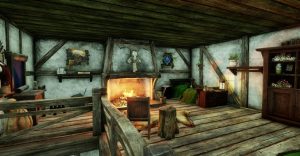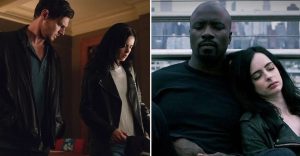10 Small Details You Only Notice Replaying The Original Resident Evil

There’s nothing quite like the original Resident Evil, even in its own franchise. Resident Evil 2 would immediately pivot towards action-horror while the first game’s remake downplayed the campiness in favor or legitimate terror on a scale the series had frankly never seen up to that point. Nearly two and a half decades after the fact, no other game balances survival horror with an arcade-esque gameplay loop quite like the original Resident Evil.
What’s notable about the first Resident Evil is how it’s more of a puzzle game than an action title. There are plenty of undead to fell, but the emphasis is on getting through the mansion as efficiently and quickly as possible. A single playthrough is never enough for Resident Evil, and the original outright demands a replay if players want to see everything RE1 has to offer.
10 The Many Differences Between Chris & Jill

Part of the original Resident Evil’s replay value stems from its two playable characters: Chris Redfield and Jill Valentine. They aren’t simply cosmetic options, and actually lead to wildly different gameplay experiences. Chris is faster & has more health, but Jill has more pocket space and better weapon variety.
Chris’ arc also places a greater emphasis on Wesker, the game’s chief antagonist, while featuring Rebecca Chambers as a key player. Jill’s plot, on the other hand, primarily centers on Barry Burton, focusing on Wesker usually through a Barry-centric context. Jill is also a bit more grounded than Chris, whose dialogue takes an odd turn during the last half hour.
9 Jill & Chris Shouldn’t Be Treated Like Difficulty Modes

Even Resident Evil itself presents Jill and Chris as difficulty modes– Normal and Hard respectively– but treating this might not actually be the case in practice. While JIll has better weapons than Chris and more item space, she has much less health than he does. Sloppy players will likely die more often playing as Jill than as Chris.
The real downside to playing as Chris (other than lacking a lockpick) is how limited his pockets are, but his playthrough is potentially much easier than Jill’s as he can receive far more punishment. This also means players need to use Herbs less often as Chris than they would as Jill, which can be a specific problem in a blind Jill run.
8 The Importance Of Ink Ribbons

Ink Ribbons are critical to the Resident Evil experience, and it can even be argued that much of the franchise’s survival horror related tension stems directly from Ink Ribbons. In the classic era games, players could only save at Typewriters if they had Ribbons on hand. Saving became a resource, and a finite one at that.
While Resident Evil 2 and 3 throw Ribbon after Ribbon at the player, the first Resident Evil is a bit more reserved. Anyone saving compulsively will find themselves rationing their Ribbons pretty much up to the end of the game. It’s an excellent way of creating organic tension while forcing players to dictate themselves when to lock progress.
7 Easy Headshots

As tense as the atmosphere is and as thought provoking as some of the enemies can be, Resident Evil is not all that challenging of a game. Combat-wise, it can be difficult getting used to aiming, but finding the Shotgun makes getting through the Spencer Mansion a breeze. This was fixed in the remake, but the original Resident Evil featured a guaranteed way to get headshots.
With the Shotgun out, simply aim up and wait for a zombie to get close enough to be shot at point blank while far enough where they can’t grab Chris or Jill. So long as the timing & placement is right (and it is generous,) one Shotgun blast will drop a zombie on the spot.
6 The Value Of Tank Controls (& Fixed Camera)

The very structure of Resident Evil can make it difficult to go back to, often generating claims that its tank controls and fixed cameras are dated. Perhaps they are dated in a technical sense, but they’re by no means poorly implemented. In fact, the original Resident Evil wouldn’t be half as good without its tank controls or fixed camera.
The fixed camera keeps the player’s attention focused while ensuring the architecture of the mansion can shine. There’s a reason the PS1 Resident Evil trilogy looks as good as it does. Fixed cameras also create tension evocative of horror movies while playing on conventional presentation practices. As for tank controls, they’re a control scheme perfectly suited for fixed angle gameplay and they take a minute to figure out.
5 No Healthy Healing

Inventory management plays a crucial role in just about every Resident Evil, whether it’s through traditional item slots or an attache case that players can fiddle around with & customize. It’s typically advised to clear out one’s inventory when exploring– so to pick up key items, ammo, or Herbs– but long exploration sessions will naturally result in full pockets.
In later titles, players can simply eat Herbs at full health to discard them if need be. In Resident Evil 1, however, there’s no healthy healing. If players find themselves stuck with full pockets, full health, and Herbs they want to get rid of, it’s back to the Item Box for them.
4 Close Quarters Combat Simply Isn’t An Option

Even though Resident Evil is kind enough to give Jill and Chris survival knives to work with, there’s a reason there are a variety of guns in-game. While the knife can be useful at stabbing zombies from afar (& saving ammo early-game,) it doesn’t do much damage and players risk getting grabbed.
Knifing outright stops being an option as soon as Hunters and dogs are introduced. While one is welcome to try to knife their way through the Spencer Mansion (and it’s certainly possible,) it’s a skill to build up to and one that requires complete mastery of Resident Evil’s controls and level design.
3 Musical Changes In The Director’s Cut

The original Resident Evil has seen many re-releases, ports, remasters, and one stellar remake since its original release, but its first major reiteration came in the form of Resident Evil: Director’s Cut for the PlayStation. As the name should suggest, Director’s Cut is meant to be the definitive version of Resident Evil, but it makes one major misstep.
On a whole, the music present in the Director’s Cut is much, much worse– almost embarrassingly bad at times. Classic tracks have been replaced with sonic gibberish, and much of the Spencer Mansion’s ambience is overwhelmed by some of the blandest music in the franchise.
2 The Live Action Actors & Voice Cast Are Different

The original Resident Evil has two sets of actors, believe it or not. It might seem obvious in hindsight, but the cast featured in live action opening cutscene and the voice cast are completely different. Now, one can be forgiven for missing this as Resident Evil does suggest these live actors are the voice actors themselves, but this isn’t the case.
The live action cutscene was filmed independently of the vocal tracks’ recording sessions, complete with a different cast. Considering Chris and Jill sounds nothing like their live-action counterparts, this makes sense, but it actually took years for this to become public knowledge.
1 If You Only Played It Once, You Played It Wrong

When it comes down to it, Resident Evil is not meant to be played just once. There are multiple playable characters and endings for a reason. More importantly, there are a variety of ways to progress through the Spencer Mansion, encouraging replayability. The game even tracks how much time one spent inside the Mansion.
Resident Evil’s arcade-esque structure demands you play it more than once to truly appreciate it. While doing a single playthrough of Chris and Jill back to back can be satisfying, the fun of Resident Evil is mastering the mansion, learning how to best navigate and get around enemies. The original Resident Evil only gets better and better.
About The Author

















